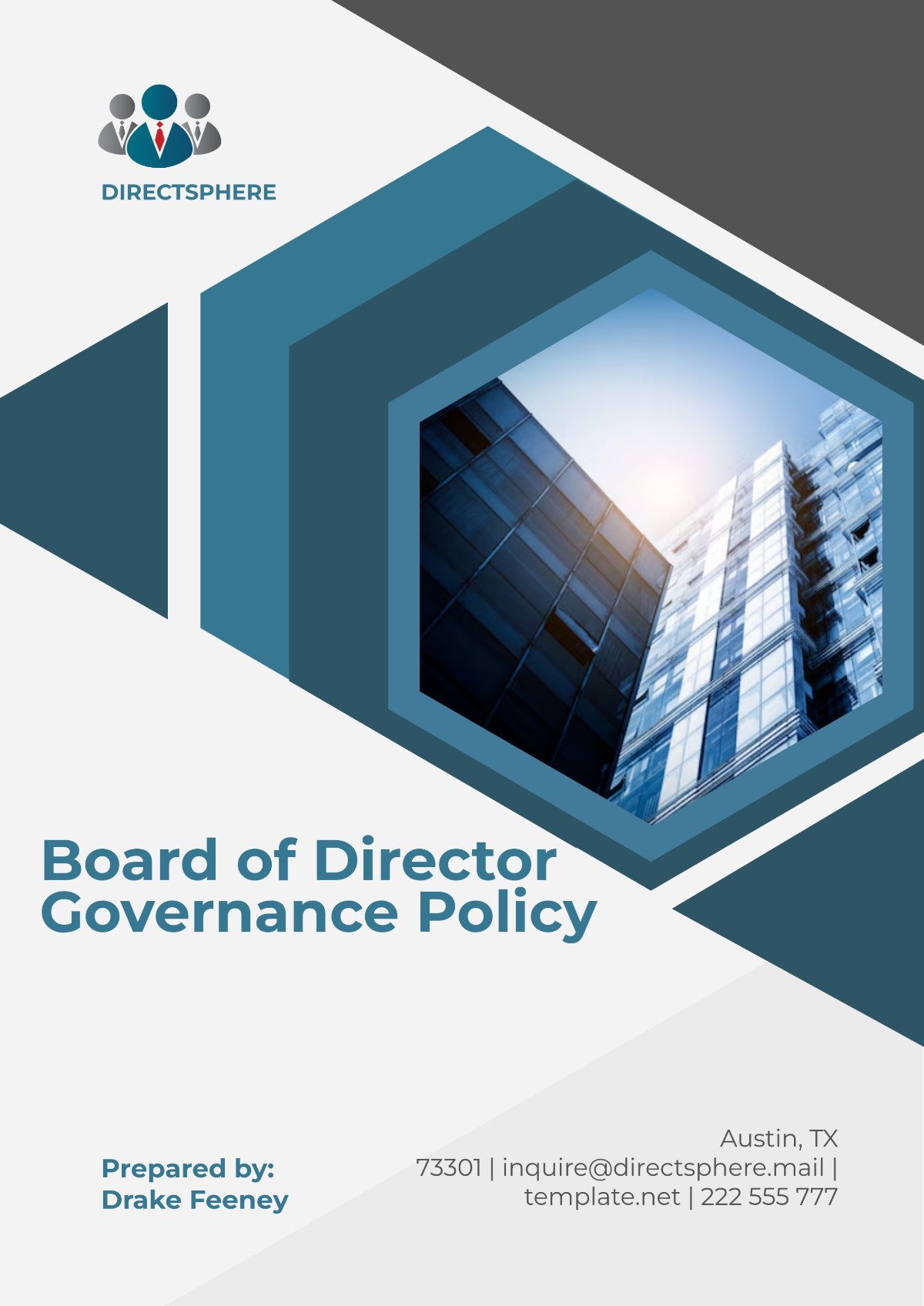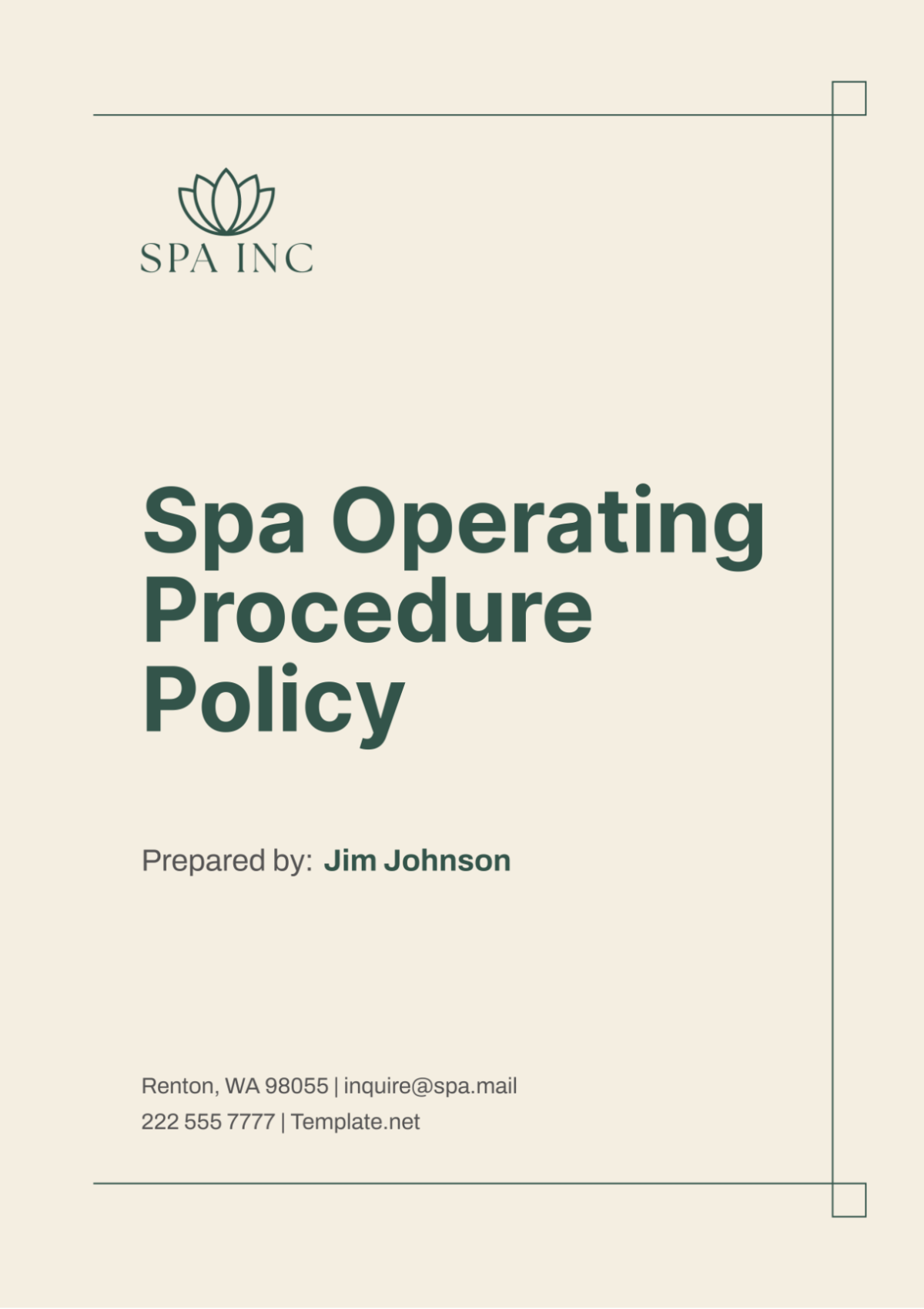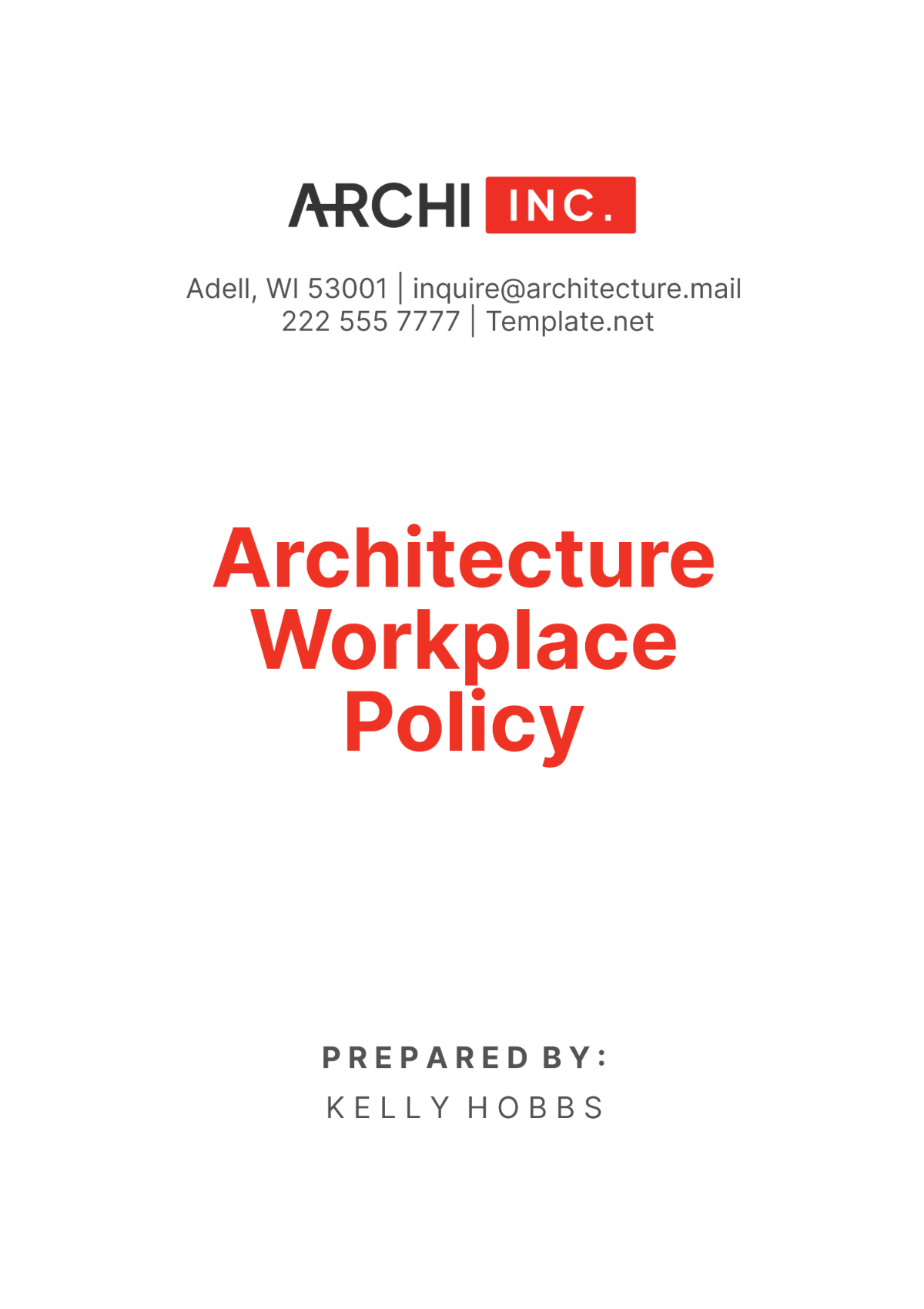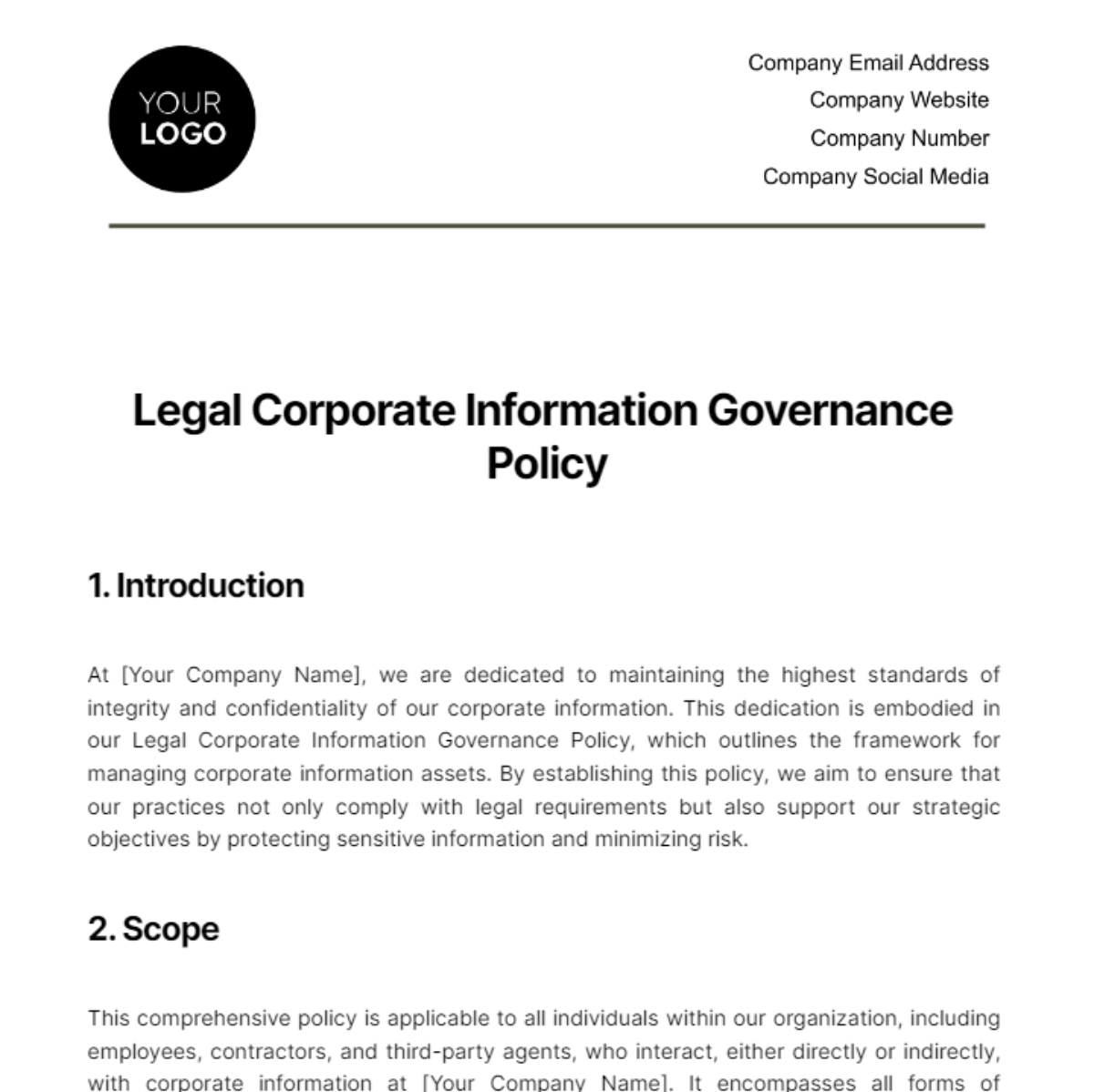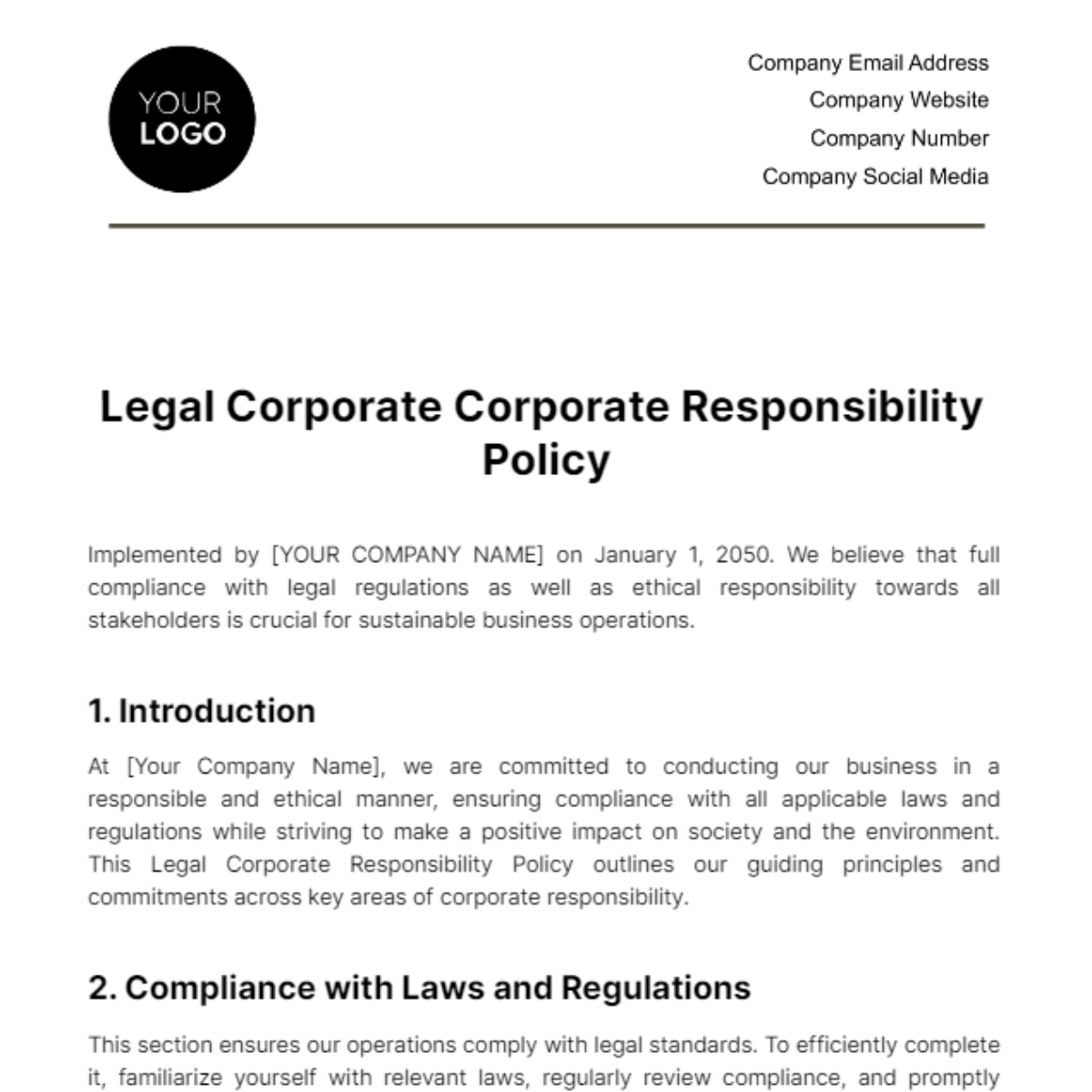Effective Date: [Month Day, Year]
I. Purpose
The purpose of this Architecture Attendance Policy is to establish clear and consistent guidelines for attendance within the Architecture department. By setting these standards, we aim to ensure that all employees contribute effectively and reliably to [Your Company Name]'s goals. Regular and punctual attendance is crucial for maintaining productivity, meeting project deadlines, and delivering high-quality architectural designs and services to our clients.
This policy also promotes a culture of accountability and responsibility. By adhering to these guidelines, employees will support the overall operational efficiency of the department, helping to minimize disruptions and maintain a steady workflow. Ultimately, this policy seeks to create a positive and professional working environment that benefits both employees and the company as a whole.
II. Scope
This policy applies to all employees within the Architecture department at [Your Company Name]. This includes full-time, part-time, and contract employees. Regardless of employment status, all Architecture department members are expected to adhere to the attendance guidelines outlined in this policy. By ensuring that all employees are held to the same standards, we promote fairness and consistency across the department, fostering a cohesive and efficient working environment.
III. Attendance Requirements
Regular attendance and punctuality are essential for maintaining the productivity and efficiency of the Architecture department. This section outlines the expectations for all employees regarding their attendance and the procedures for reporting absences. Adhering to these requirements helps ensure that project timelines are met and that the team can operate smoothly and effectively.
A. Regular Attendance
All employees are expected to maintain regular attendance and be punctual. The following guidelines apply:
Arrive at the designated workspace by the start of the scheduled shift.
Remain present and engaged until the end of the scheduled shift.
Take breaks and lunches as scheduled and return promptly.
B. Reporting Absences
Employees must report any anticipated or unexpected absences to their immediate supervisor as soon as possible. Notifications should be made via phone or email before the start of the workday. The following details should be included:
Reason for the absence.
Expected duration of the absence.
Any urgent tasks or deadlines that need to be addressed during the absence.
This proactive communication helps the team manage workloads and maintain project continuity.
IV. Absenteeism
Managing absenteeism is critical to ensuring the smooth operation of the Architecture department. This section delineates the types of absences—authorized and unauthorized—and the procedures and consequences associated with each. By clearly defining these categories, we aim to maintain fairness and accountability, while also providing support for legitimate time off.
A. Authorized Absences
Authorized absences include approved leaves, such as medical leave, personal leave, and vacation days. These leaves must be requested and approved in accordance with [Your Company Name]'s Leave Policy. The following steps should be taken:
Submit a leave request form to your immediate supervisor.
Provide any required documentation, such as a doctor's note for medical leave.
Ensure leave is approved before taking time off.
Plan and communicate with team members about pending tasks or projects.
B. Unauthorized Absences
Unauthorized absences occur when an employee fails to report to work without prior notice or approval. Such absences disrupt the workflow and will be subject to disciplinary actions as outlined in the company's disciplinary policy. The following actions may be taken:
Verbal or written warnings.
Suspension without pay.
Termination of employment for repeated offenses.
These measures ensure that attendance issues are addressed promptly and that the integrity of the work environment is maintained.
V. Late Arrivals and Early Departures
Punctuality is essential for the smooth operation of the Architecture department. While occasional delays or early departures may occur due to unforeseen circumstances, repeated incidents will be monitored closely. Employees are expected to arrive on time for their scheduled shifts and remain until the end of their designated work hours. Persistent tardiness or early departures may result in disciplinary action, as outlined in the company's policies.
Employees are encouraged to communicate any issues affecting their ability to adhere to their schedule with their supervisor. Open communication allows for understanding and support when faced with challenges that may impact punctuality. By addressing these issues proactively, employees can work towards maintaining a consistent attendance record and contributing effectively to the department's objectives.
VI. Record Keeping
Accurate record keeping of attendance is essential for ensuring compliance with company policies and labor regulations. The Human Resources Department is responsible for maintaining detailed attendance records for all employees in the Architecture department. These records are crucial for tracking attendance patterns, managing leave balances, and addressing any attendance-related issues that may arise. Employees can request access to their attendance records at any time to review and ensure accuracy.
The attendance records include, but are not limited to:
Dates of attendance for each employee.
Start and end times of shifts.
Break and lunch times.
Types of leave taken (e.g., sick leave, vacation).
Total hours worked per pay period.
Any instances of late arrivals or early departures.
Any authorized or unauthorized absences.
Documentation related to approved leaves (e.g., medical certificates).
VII. Disciplinary Actions
Adherence to the Architecture Attendance Policy is vital for maintaining a productive and efficient work environment. Failure to comply with the policy may result in disciplinary action. The following table outlines the progressive disciplinary measures that may be taken in response to attendance issues:
Disciplinary Action | Description |
|---|---|
Verbal Warning | A verbal warning is issued for the first offense of non-compliance with the attendance policy. |
Written Warning | A written warning is issued for repeated offenses or failure to improve after a verbal warning. |
Suspension | Suspension without pay may be imposed for continued non-compliance or serious attendance violations. |
Termination of Employment | Termination may result from persistent attendance issues that significantly impact operations. |
Disciplinary actions will be applied consistently and fairly, taking into account the specific circumstances of each case. Employees are encouraged to address any attendance concerns with their supervisor promptly to avoid disciplinary measures.
VIII. Review and Modification of Policy
This policy will be reviewed annually to ensure it remains effective and compliant with current business needs and legal requirements. Modifications may be made as necessary to address changes in operational demands or updates in employment laws. Any changes to the policy will be communicated to all employees in a timely manner, ensuring that everyone is informed and understands the updated guidelines. Regular review and modification help maintain a fair and functional attendance policy that supports both the employees and the company.






